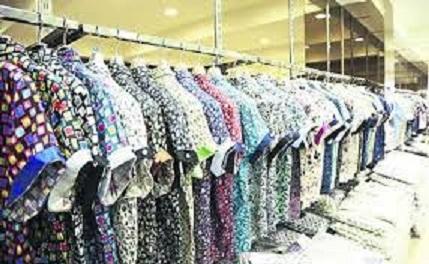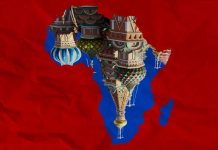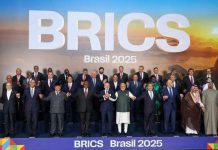Africa-Press – Mauritius. To the honourable minister Sushil Khushiram, the bad days of the Mauritian textile and clothing industry is behind us now and next year will be a good one for the industry. He is satisfied with the fact that during the last six months the level of employment in the sector has been more or less stable.
But does it really mean that employees working in that sector should stop fearing about jobs losses in the coming year? Is there any guarantee for that? How far should we believe the minister?s point of view? Is it not just a political statement? I completely agree that the third country fabric exemption granted under AGOA III (amendments) for a period of one year (with renewal opportunities for three more years), will bring Mauritius on the same level as other African countries, which have already benefited from the exemption. To quote the minister Sushil Khushiram ?these countries got ahead of us as first exporters of textiles and clothing to the US market?.
Thus we believe that in the coming year or years, exports to the US under AGOA will increase; but, will exports increase significantly? Even if exports increase significantly in the coming year, what will happen after that if the third country fabric exemption is not renewed for more years? Shall we once more live in hopes of lobbying success? To quote honourable Jayen Cuttaree, on the other hand ?il est écrit noir sur blanc que la Chine envisage une limitation volontaire de ses volumes d?exportations (referring to the exports of textile products)? (l?express of Monday, October the 4th, 2004).
Who would believe that China would really limit its textile exports? Who will monitor whether this is really happening? Is there any controlling body to look into this matter? Even if we assume that in reality China will limit its textile exports, two fundamental questions arise: firstly, by how much will China restrict its exports? And secondly, does this restriction mean greater market access for Mauritian products? Of course we don?t know the extent to which China will restrict its exports and there is no mechanism put in place to control exports of China.
More importantly, China is not the only major textile exporting country which will benefit from the abolition of the MFA. If China restricts its exports, then it will make room for countries like India, Bangladesh and Sri Lanka.
Mauritius will not benefit at all in terms of greater market access. The issue today is no more about market access but about productivity of existing firms.
Either you become more productive or you perish in this world trading system. Globalisation, through freer trade will always be disadvantageous to small countries. Small countries with a limited domestic market rely too much on exports of some of their products for survival.
● What will be the effect of the dismantling of the MFA on Mauritius? A general equilibrium framework is used to analyse the possible effects of the MFA phase out on Mauritius.
General equilibrium is an analytical approach looking at the economy as a complete system of interdependent components such as industries, households, investors, government, importers and exporters. Using a general equilibrium framework, insights on macro-economic variables as well as sectoral micro level variables are obtained.
Simulating a decrease of 25% in the quantity of wearing apparel exported show that the level of employment in the wearing apparel sector will fall by around 20 % to 25 %, assuming that the manufacturing sector is not restructured.
To set the scene, during the period June 2003- June 2004 the number of employees in the wearing apparel sector fell from 68,099 to 55,032 (i. e. 13,067 employees lost their jobs in that year) and the number of firms in the same sector fell from 236 to 222.
I believe that some 2,500 more people will lose their jobs in the days or months to come. Certainly this decrease in wearing apparel exports will have a negative impact on the level of GDP, foreign exchange earnings and investment level.
Exchange rate would depreciate by 3.3 %. This depreciation would act as an incentive for other exports. In fact non wearing apparel exports would increase by 11.3 %.
Following the depreciation, imports would become more expensive and as a result imports would decline by 1.2%. The imports of intermediates into wearing apparel production would fall steeply.
This is attributed to the two factors mentioned above; an increase in price of imports and a fall in exports and thus production of wearing apparels. Overall Gross Domestic Product (GDP) at market prices would drop by around 2%.
Since the wearing apparel sector is mostly dominated by female employment, returns to female labour would decrease by around 8 % more than their male counterparts. And returns to capital would fall by 1.3 %. ● Recommendations.
We commend the recent initiative of the government to provide an amount equal to Rs 200 million for the textile sector through the National Equity Fund in an attempt to re-structure the textile sector of Mauritius.
Textile industries should take advantage of this policy and gear their investments in such a way to become more productive in the near future if they want to survive.
Mauritius has already lost its wage cost advantage. Consider the following table: Therefore Mauritius can no longer depend on the production of wearing apparel with low value added requiring low skilled labour.
It is high time that the concerned parties start to seriously devise strategies to move up-market. Upgrading of textile products will bridge the existing gap between high wages and export competitiveness.
Moving up-market would require the following: Upgrading of the production systems, re-organizing production processes, investment in new capital goods, investment in training, re-training and multi-skilling of labour, investment in research and development, especially design, marketing strategies It should be noted that even if Mauritius has long been in the manufacturing of clothing, it has not benefited from economies of concentration, information and disintegration.
To benefit from these advantages, linkages between processing plants are required. Moving up-market will require more of small and medium sized plants collaborating with each other rather than large firms producing standardized products.
We recommend the setting up of a textile village in Mauritius where almost all the industries in the clothing sector will be present. By being concentrated in one place, there are a large number of advantages that firms can benefit together.
For instance, the village may have training schools which will help in providing training and upgrading the skills of labour as and when required. This would bring an added cost advantage.
Firms requiring labour with certain specific skills can easily have information on the availability of such labours. There won?t be any mismatch between skills available and jobs available.
There should be the creation of schools of design and fashion. To begin with the government should invest in human capital especially in the creation of fully skilled designers.
Furthermore, firms can invest together in R&D and share the information. In this way research and development would be cheaper for each firm. More importantly, production processes should be disintegrated with firms specializing in few production processes and providing high standard products.
Producing quality products should be the motto of local firms. Not only moving up-market is important but this should also be accompanied by backward integration that is going towards the production of textile products.
For More News And Analysis About Mauritius Follow Africa-Press







